 Today I'm practicing for when I make enough money to do absolutely nothing. 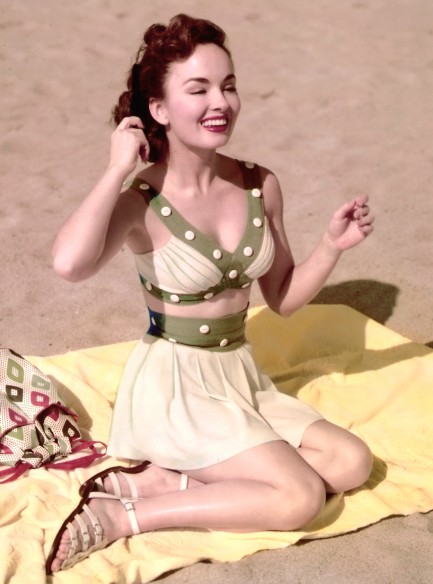 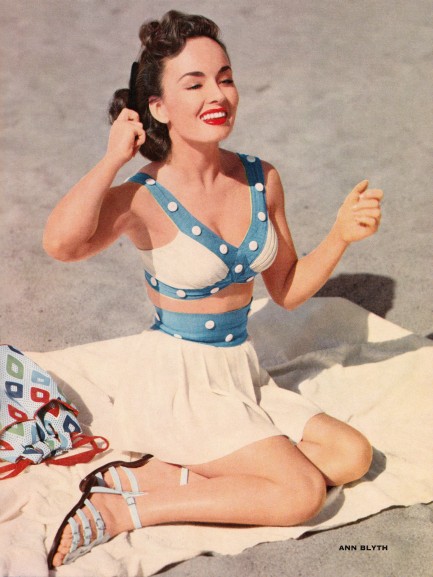
The lovely photo at top of U.S. actress Ann Blyth was made when she was filming the tearjerker Our Very Own in 1950. It was a popular shot, and a frame from the same session was used in a 1952 issue of Photoplay Pin Ups, which you also see here. No, it's not the same photo. The colors are different, of course, but thats just the printing process. If you look closely, you'll see that the tilt of her head is different, and her hands are held differently. The two photos were shot instants apart.
Six years ago we featured a fun photo of Blyth in her mermaid costume from Mr. Peabody and the Mermaid and mentioned that she was still around. That remains true. She's ninety-three and defying the presumption that all the stars from the golden age of Hollywood are gone. Among her many films is the crime drama Brute Force, which we've been meaning to get to, so you'll see Blyth here again before very long. In the meantime, you can see that shot of her as a mermaid here.
 Who says it never Raines in L.A? 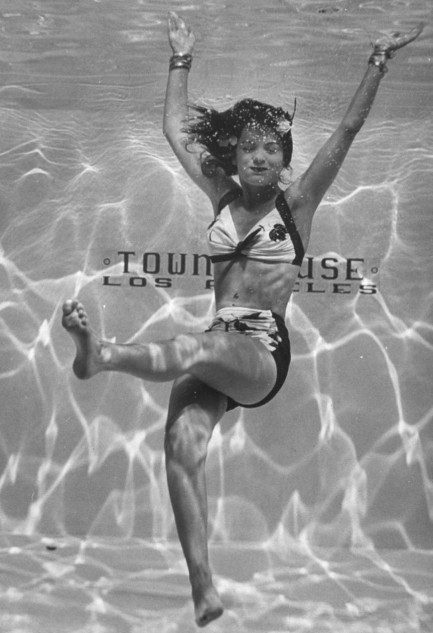
You can't tell with her face all scrunched up, but the person in the above photo is actress Ella Raines, who appeared in such films as Brute Force, The Web, and Phantom Lady. Here she makes a July 1943 cameo in the pool at the Town House Hotel in Los Angeles, which was famous for its water nymphs that frolicked as guests in the hotel bar watched through plate glass. We've featured the Town House pool before, and those shots are worth a look. Just click the keywords below and scroll.
 I always appreciate attention from a handsome lifeguard, but I think someone's drowning over there. 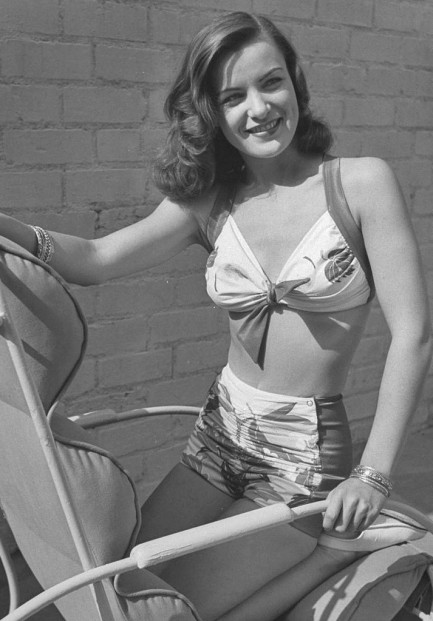
Above, U.S. born actress Ella Raines lounges in her bathing suit in this summery image from 1943 made in Los Angeles at the Town House Hotel. Later she'd take a dip in the pool. Raines appeared in such films as Phantom Lady, Impact, and Brute Force, before transitioning to television in the 1950s. We talked about her 1947 film noir The Web a few years ago and you can read about that here.
 Who needs force when you have firepower? 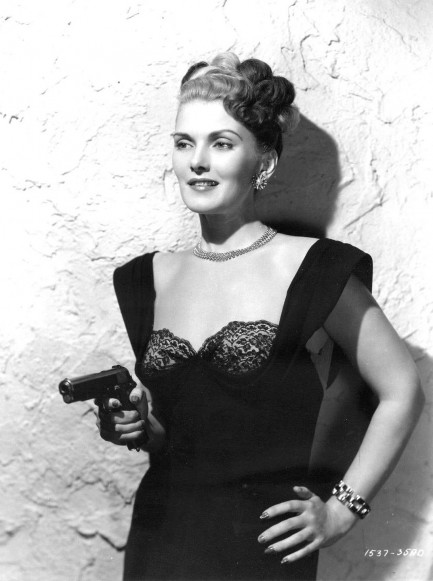
Anita Colby, née Anita Counihan, is probably most remembered for her role as the bad girl Flossie in Jules Dassin's film noir Brute Force. It was one of only a few cinematic parts she landed, but it was a memorable one—she robs John Hoyt at gunpoint, kicks him out of his own car, and leaves him stranded. But he remembers her somewhat fondly anyway. Here's how he describes her to another character: “Flossie had looks, brains and all the accessories. She was better than a deck with six aces. But I regret to report that she also knew how to handle a gun—my gun.” Well, nobody's perfect. This image dates from 1947.
 There are eight million stories in The Naked City. 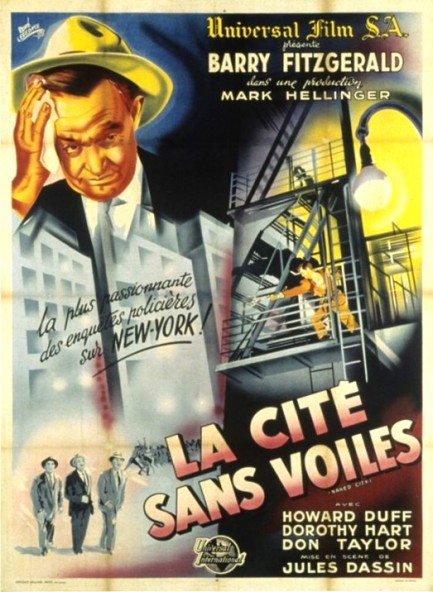
Above: a great French poster for Jules Dassin’s film noir La cité sans voiles, which was originally produced in the U.S. and called The Naked City. Dassin, who apprenticed under Alfred Hitchcock, was one of the quintessential noir directors, also helming 1947’s Brute Force, 1949’s Thieves’ Highway, and 1950’s spectacular Night and the City. His career in the U.S. was ruined when he was named during the anti-communist hysteria of the 1950s, forcing him to live the rest of his life in more tolerant France. It was there that he made the 1955 heist thriller Du rififi chez les hommes, aka Rififi, possibly his best—and best remembered—work. The Naked City, while not perfect, is certainly a significant piece, due to both its style and substance. Its tagline has become part of the American lexicon: "There are eight million stories in the naked city; this has been one of them." In 2007 the U.S. Library of Congress agreed that The Naked City was a special achievement when it selected the film for preservation in the National Film Registry for being “culturally, historically and aesthetically signifitcant.” For Dassin, who'd been persecuted for a political belief, maybe the award was some small consolation. If so he didn't get to enjoy it long—he died the next year. La cité sans voiles premiered in France today in 1949.
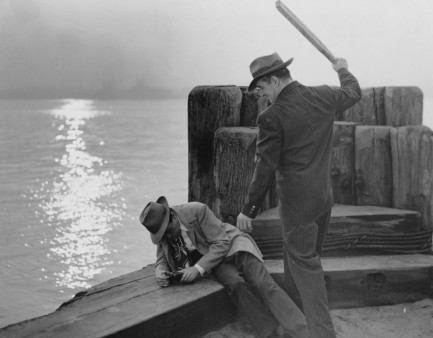 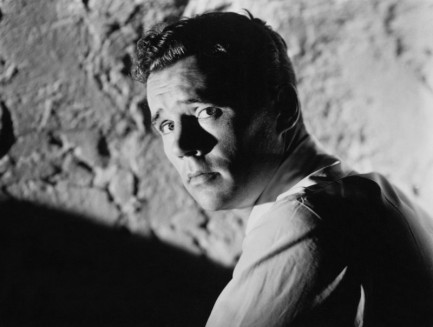 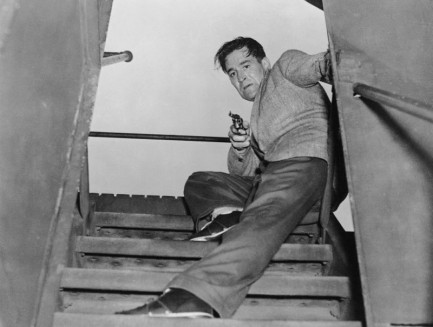 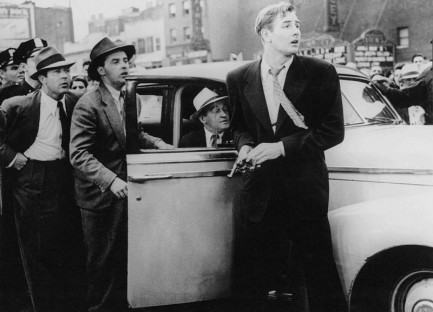
|
 |

The headlines that mattered yesteryear.
2003—Hope Dies
Film legend Bob Hope dies of pneumonia two months after celebrating his 100th birthday. 1945—Churchill Given the Sack
In spite of admiring Winston Churchill as a great wartime leader, Britons elect
Clement Attlee the nation's new prime minister in a sweeping victory for the Labour Party over the Conservatives. 1952—Evita Peron Dies
Eva Duarte de Peron, aka Evita, wife of the president of the Argentine Republic, dies from cancer at age 33. Evita had brought the working classes into a position of political power never witnessed before, but was hated by the nation's powerful military class. She is lain to rest in Milan, Italy in a secret grave under a nun's name, but is eventually returned to Argentina for reburial beside her husband in 1974. 1943—Mussolini Calls It Quits
Italian dictator Benito Mussolini steps down as head of the armed forces and the government. It soon becomes clear that Il Duce did not relinquish power voluntarily, but was forced to resign after former Fascist colleagues turned against him. He is later installed by Germany as leader of the Italian Social Republic in the north of the country, but is killed by partisans in 1945.
|

|
|

It's easy. We have an uploader that makes it a snap. Use it to submit your art, text, header, and subhead. Your post can be funny, serious, or anything in between, as long as it's vintage pulp. You'll get a byline and experience the fleeting pride of free authorship. We'll edit your post for typos, but the rest is up to you. Click here to give us your best shot.

|
|



















































































